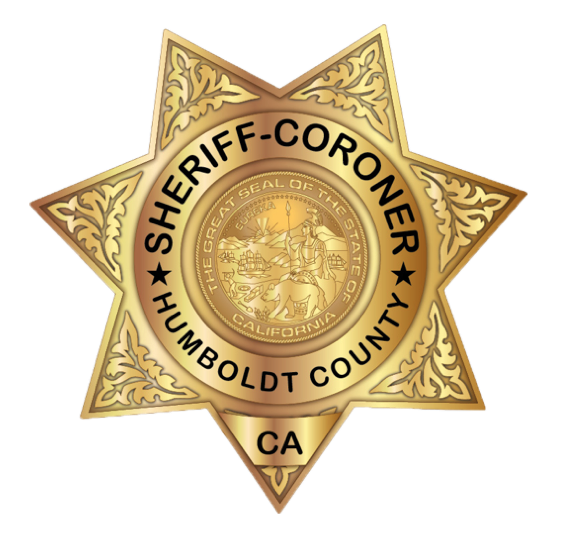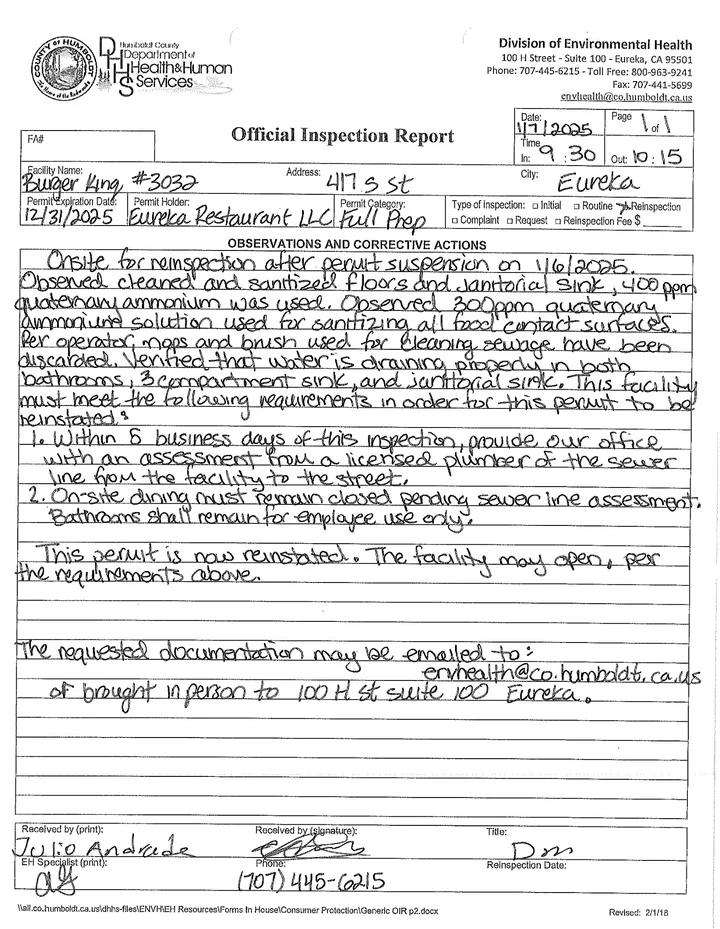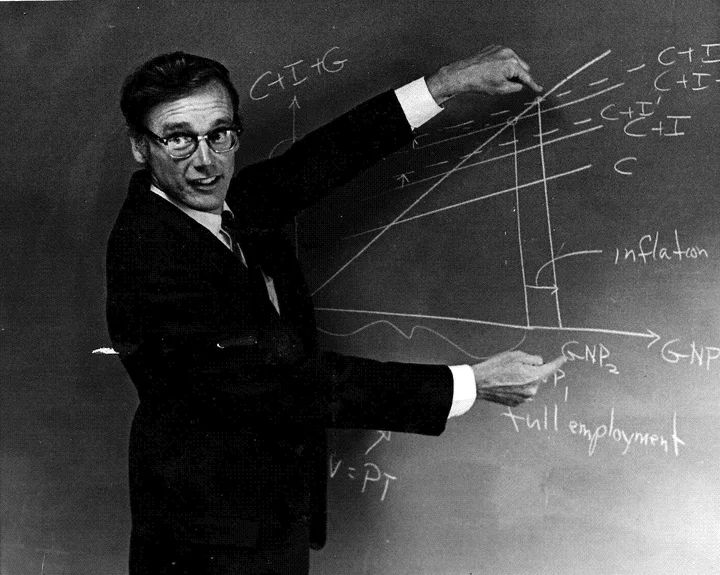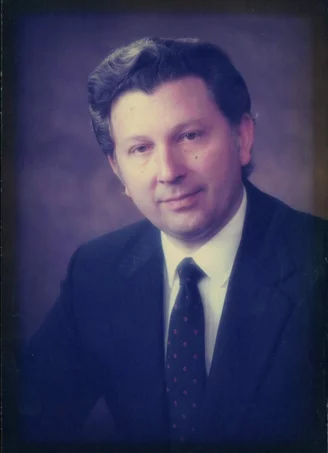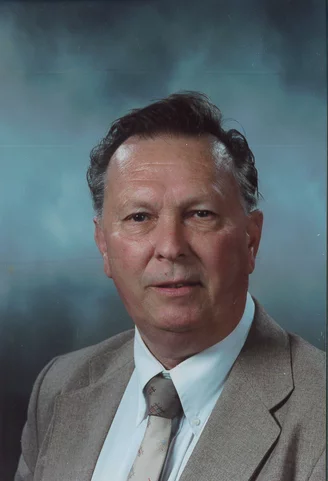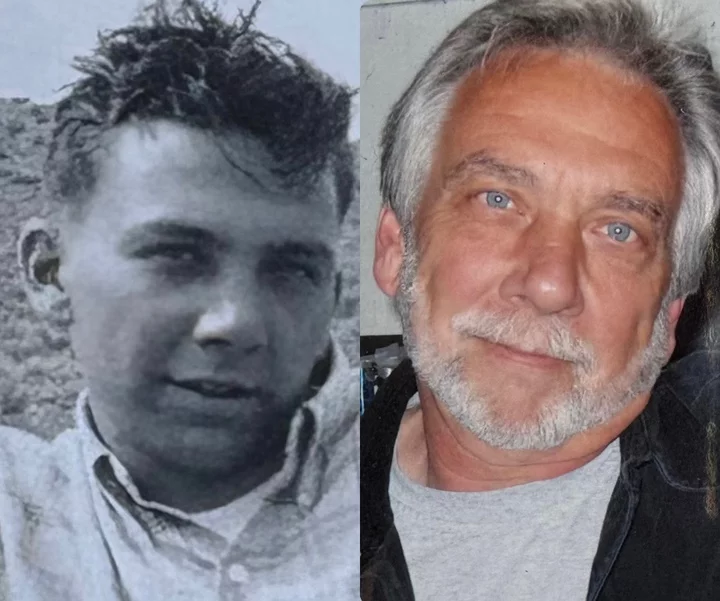Eureka Man Arrested After Leading Law Enforcement on Wild Goose Chase Up and Down the Samoa Peninsula
LoCO Staff / Tuesday, Jan. 7 @ 11:59 a.m. / Crime
Press release from the Humboldt County Sheriff’s Office:
On Jan. 5, 2025, at around 10 a.m., a Humboldt County Sheriff’s deputy on patrol in the area of the Samoa Dunes Recreation Area observed a parked vehicle with expired registration and contacted the two adults who were sitting near the vehicle.
A male, later identified as Joshua Price, 44, of Eureka, falsely identified himself to the deputy as “Billy Waters” and asked to use the restroom, but instead he fled on foot into the nearby dunes. A records check on Price revealed that he had a felony arrest warrant stemming from a December 2024 violation of HS 11370.1(A): Possession of a Controlled Substance While Armed.
Deputies searched the area for Price. Deputies located some of his personal items but were unable to locate Price at the time.
Around 12 p.m., a deputy observed Price walking northbound on the beach near the Bay. Upon the deputy attempting contact, Price began sprinting and then entered private property at the Humboldt Bay Social Club, violating Penal Code 602 (trespassing).
Price was ultimately located in a wooded area of Samoa and, with assistance from a Game Warden, he was taken into custody without further incident. Price was transported and booked into the Humboldt County Correctional Facility for his outstanding warrant.
Anyone with information about this case or related criminal activity is encouraged to call the Humboldt County Sheriff’s Office at (707) 445-7251 or the Sheriff’s Office Crime Tip line at (707) 268-2539.
BOOKED
Today: 11 felonies, 16 misdemeanors, 0 infractions
JUDGED
Humboldt County Superior Court Calendar: Today
CHP REPORTS
No current incidents
ELSEWHERE
RHBB: Humboldt Has Offshore Wind Potential, Lacks Supply Chain and Workforce Says Consultant
RHBB: Pedestrian Injured After Being Struck by Vehicle in Eureka Thursday Evening
Governor’s Office: California state parks are for everyone, while Trump turns national parks into his vanity project
RHBB: Driver Unresponsive After Tesla Leaves Highway 101 North of Highway 162 Junction
After a Bit of a Delay, Humboldt’s New Solar Energy Producer in Kern County is Now Operational
Hank Sims / Tuesday, Jan. 7 @ 11:09 a.m. / Energy
Sandrini at sunset. PHoto: EDP Renewables.
PREVIOUSLY:
###
It took a couple of years longer than expected, but a big new solar farm outside Bakersfield is now pumping electrons into the grid, and is providing for about a third of the total electrical needs of customers of the Redwood Coast Energy Authority.
“RCEA has been phenomenal to work with, and we’re really happy to get them closer to their goals,” said Tom Weirich, the head of marketing and stakeholder relations at EDP Renewables, in a quick conversation with the Outpost this morning. EDP is the developer of the Sandrini Solar Park, the solar farm in question.
Sandrini actually became operational sometime last month, Weirich said, but everything is looking good and they made the big announcement this morning.
Press release from EDP Renewables, via the Redwood Coast Energy Authority:
EDP Renewables North America LLC (EDPR NA), a leading renewable energy developer and a top-five renewable energy owner and operator in the United States, unveiled Sandrini I & II Solar Energy Park (Sandrini I & II) today in Kern County.
The two-phase solar energy park includes the 200 megawatt (MW) Sandrini I, which has a 15-year power purchase agreement (PPA) with Shell Energy North America (SENA), and 100 MW Sandrini II, which has a 15-year PPA with Redwood Coast Energy Authority (RCEA). Both phases of the project were commissioned in Q4, 2024.
Generating enough energy to power the equivalent of more than 76,000 California homes each year, Sandrini I has already disbursed more than $510,000 in tax payments to local governments since 2023. This has strengthened the local community by enhancing schools, roads, and other essential services. Additionally, approximately $15 million will be paid to local landowners, who lease a portion of their land to house the solar energy park’s infrastructure. Sandrini I & II employed more than 200 workers during construction and will create several permanent operations positions.
Power from Sandrini II will provide over a third of the total annual electric need for customers of RCEA’s community choice energy program. RCEA supplies more than 90% of the electricity for Humboldt County on California’s rural north coast. Completion of Sandrini II marks a large step toward RCEA meeting its goal of supplying 100% renewable energy to its customers by 2030.
RCEA is one of 25 community choice aggregators (CCAs) now serving communities in California. Sandrini II adds to 8,000 MW of new clean energy resources brought online to date by California’s CCAs. An additional 10,000 MW of new clean resources are in contract with these CCAs and are currently under development or construction. The CCAs’ clean energy projects collectively support over 36,000 construction jobs across California and the West.
“RCEA is committed to achieving our goal of supplying Humboldt County with 100% renewable energy. Sandrini II is a welcomed addition to our energy portfolio. We are proud to see another high-impact solar project go to work on behalf of our community,” RCEA Board Chair Sarah Schaefer said.
The construction and ongoing operations of Sandrini I & II will continue to aid in local spending and support of small businesses - namely restaurants, hotels, and retailers - located near the project. Both phases of the solar energy park also yield environmental benefits, including saving more than 381 million gallons of water each year compared to the amount of water that conventional generation sourceswould need to produce the same amount of capacity. These water savings, in turn, will help aid Kern County’s water conservation goals.
“Sandrini I & II represent EDP Renewables’ continued commitment to investing in California and are a direct contribution to California’s admirable target of achieving 100 percent clean electricity by 2045,” added Sandhya Ganapathy, CEO of EDP Renewables North America. “The Golden State is known for its leadership in solar energy, and EDP Renewables is elated to meet the growing demand for reliable, clean energy sources.”
EDPR NA is a clean energy leader in California, currently operating six renewable energy projects in the State, totalling 488 MW of capacity. Its projects include three phases of the Rising Tree Wind Farm, two phases of the Lone Valley Solar Park, and the Windhub A Solar Park. EDPR NA’s California portfolio also boasts several other solar parks and battery storage facilities, including the recently completed 200 MW solar and 40 MW storage Scarlet Solar Energy Park.
###
About EDP Renewables North America
EDP Renewables North America LLC (EDPR NA), its affiliates, and its subsidiaries develop, construct, own, and operate wind farms, solar parks, and energy storage systems throughout North America. Headquartered in Houston, with 61 wind farms, 19 solar parks, and eight regional offices across North America, EDPR NA has developed more than 11,700 megawatts (MW) and operates more than 10,500 MW of onshore utility-scale renewable energy projects. With more than 1,000 employees, EDPR NA’s highly qualified team has a proven capacity to execute projects across the continent. For more information, visit the website and follow us on LinkedIn.
About RCEA
Established in 2003, the Redwood Coast Energy Authority is a local government joint powers agency whose members include the Blue Lake Rancheria, Yurok Tribe, the County of Humboldt, the seven cities within the county, and the Humboldt Bay Municipal Water District. RCEA’s purpose is to develop and implement sustainable energy initiatives that reduce energy demand, increase energy efficiency, and advance the use of clean, efficient, and renewable resources available in the region. For more info, visit the website.
BK is BACK! The Eureka Burger King is Operational for the Time Being, But Only the Drive-Thru Part of it For Now
LoCO Staff / Tuesday, Jan. 7 @ 10:55 a.m. / Health
PREVIOUSLY:
Good news from the corner of Fifth and S streets: The floors of the Eureka Burger King have been sterilized and they’re serving customers again.
But don’t expect to encounter the bitties in the the BK lounge proper anytime soon, as the restaurant is limited to drive-thru services until such time as a longer-term assessment of the site’s sewage infrastructure can be performed.
Once again, here is the handwritten report from the Humboldt County Division of Environmental Health, which likes to keep it retro:
OBITUARY: Ted Ruprecht, 1928-2024
LoCO Staff / Tuesday, Jan. 7 @ 6:56 a.m. / Obits
Ted
Ruprecht’s Obituary
August 1, 1928 to December 14,
2024
The best life stories are the ones the person writes himself. This is excerpted from an essay our father wrote for his 80th birthday celebration. We celebrated again on his 90th, and he continued having adventures until past his 96th. Here’s what he wrote:
###
I was born to Lorraine Follet & Fredrick Kilian Ruprecht in New York’s Presbyterian Hospital. My grandfather migrated alone from Germany at 16 years old and rose to became head of the Standard Oil maritime division. My mother was the first female Art Director of a New York advertising agency. My father quit college to go to sea on a Standard Oil ship. He became a naval architect.
I grew up in Brooklyn a sickly child, as evidenced by having to repeat the first grade and my memory of taking cod-liver oil and having to sit by the window to absorb sunlight. I remember my first fight on the streets of NY, which I lost. That night my father gave me a boxing lesson and the next day out I went to restore justice with my first fight victory.
Our apartment was next to the baseball field in Prospect Park. My father and I would go up to the roof and watch the games. Thus, was born my enjoyment of baseball. I became a lifetime fan of the Dodgers.
When I was seven, my parents wanted to get me and my sister out of NY and so we moved to Ardsley, a small Italian community about 25 miles north of the city that was settled by Italian workers brought to the US to build the NY Aqueduct.
We lived a few miles from town in the country. I loved it. My activities were gardening with my father, sledding in the winter where you belly-flopped immediately after another kid, sledded faster, reached out, grabbed and jerked his runner and sent him into the snow bank.
Christmas was very important in our family. We never saw the tree until Christmas morning. This was during the Depression, and I found out later that my father waited until Christmas Eve when the trees were cheaper to buy it. I slept very little on Christmas Eve because I knew Santa was going to give me a kiss and I was afraid his beard would tickle me and wake me up and if I woke there would be no Christmas. In the morning, I would lead a family parade through the house and by the tree and presents while singing “O Tannenbaum.”
In about the third grade, I began to notice I couldn’t see the blackboard but I didn’t want to wear glasses, so when we lined up at school for our eye exams, I memorized the eye chart—which worked fine until they asked me to read it backwards.
During the Great Depression, when there was no war on and no need to build more naval ships, my father was laid off. My mom was the primary breadwinner. We moved frequently because we were living in foreclosed houses. Eventually the bank would sell that house, and we’d move to another. By the fifth grade we were in Crestwood, still 25 miles from NY, along the Bronx River where we lived in a 3-story Victorian house with sliding doors, a curved staircase and a tower. I had the entire third floor with my electric trains in the tower. Lots of kids to play with, learned to ride a bike, had my first girlfriend, and put in a big flower garden with my father.
During the summers, we spent a week at a relative’s farm in Vermont who took in visitors to augment their farm income. We kids watched the cows being milked; we slopped the pigs and jumped in the big hay pile in the barn. Thus, was born my desire to live in the country and have animals.
During WWII, my father came out to California to design cargo ships being built in Long Beach. When times seemed safe, he brought the rest of the family west to Long Beach, California, the summer before the seventh grade.
I was painfully shy. Back East in the summer, we wore shorts, but when I did this in California the neighborhood kids made fun of me. The result was I never again went outside to play for the rest of the summer. I gardened and made balsa plane and ship models and miniscule clay ship models.
Despite the sickly childhood, I never had an absent day in Jr. High, mostly because I didn’t know what the process was to return to school after missing a day and was too shy to find out. I remember air-raid warnings and blackouts with our heavy black curtains and boxes of sand to put out the incendiary bombs. In Junior High I did all the athletic activities and got my first exposure to track in the All-City Jr. High track meet. When we tried out for it at school, I ran a sprint but they sent me back to try again because they said I wasn’t trying; they hadn’t seen me straining. I was trying, I just ran relaxed, and I was not yet very fast.
At Woodrow Wilson High School, I went out for track. My father had run middle distance in college and my mother had gotten her nickname Coy from the star university football player noted for his speed. For the first workout, we all lined up to run a quarter mile race. I had no clue, but toward the end I began passing gobs of people so I was entered in the ‘B’ 220 at our first meet. I got second, and the couch came and said, “Give this kid a uniform,” as I had run in my gym clothes.
As a Junior, I won the All-City 440 in probably the most significant race of my life because coming toward the end I was very tired (I was always very tired, always throwing up after each race) and in third place. I remember thinking, “I can just coast in and nobody will ever know,” but I decided not to, to give a final effort in what I now consider a momentous life course decision. As a senior, I was elected captain and ran the sprints, set the school record in the 220, was selected All-City, got second in both sprints, was selected in the So-Cal Interscholastic Federation, placed in the state meet, and had the ego-stroking experience of being recruited for college.
I chose Occidental College (Oxy) mostly due to the guidance of my high school teacher, Vince Reel, who was a graduate from Oxy. He was also a great coach, being selected by the US Dept of State to coach three different countries’ Olympic teams, an important element in my maturation. My Oxy coach was Payton Jordan, himself a great sprinter and later a US Olympic coach. The two most memorable track events of college were first, anchoring the meet that decided the final relay in Oxy’s dual most victory over Stanford University, and second, the four man mile relay in my junior year in the Coliseum Invitational before 40,000 spectators.
Because this was an invitational meet, teams were from all over the US. The favorite, Morgan State, was a black team from the East Coast with three National Collegiate Champions-to-be. We were invited as a sort of local flavor afterthought. In a neck and neck race, Oxy won in the fastest time in the world for that year and the second fastest winning time in history.
I aspired to be a naval architect like my father, but he advised against it. He said it was only a good profession when there was a war on.
While working on my Ph.D in Economics at UC Berkeley, I continued to run. My first year at Berkeley was an Olympic year and I tried to make the Olympic team. I did run my personal best time, and although I didn’t make the team, my time would have qualified me for every other country’s team except Germany.
I had culture shock when I went to large and impersonal Berkeley from little, sheltered Occidental. My appointed advisor was a famous economics theoretician, but I never met him, he was too busy; my advising was done by the secretary.
During my third year, I was the “house mother” in one of the dorms, and I noticed a cute switchboard operator wearing a low-cut dress. I sought her out at the first “mixer” dance. Later, when I got down on both knees and asked her to marry me, Joan Marie Ledgerwood made my life by saying yes.
I left Berkeley to teach at Occidental while I continued to work on my dissertation, “Population Growth and Egyptian Economic Development.” As a graduate student, I published a paper in the prestigious American Economic Review.
We had our first child, Janet, in Los Angeles. When we came to Humboldt State College in 1958, there were only two economists and a student body of 2000. I intended to stay 3-4 years as that was how to play the academic game, but ended up staying 33 years — until retirement.
During this, time we added Carol, Phillip and Elaine to the family and spent considerable time abroad on various leaves.
The was a Fulbright research grant to the Philippines to continue working on the issues of rapid population growth’s impacts on economic development. I had the privilege of working with one of the all-time greatest demographers, Frank Lorimer, who became a mentor and promoter for me. The year spent there was exciting, with terrific collogues, breakthrough research and eventually a book on the subject, as well as collaboration on a Philippine Economics textbook, a number of papers and conference presentations in the Philippines and at the world population conference in Belgrade, Yugoslavia.
Sadly, we lost a second son, Luke, in childbirth in the Philippines.
The Fulbright experience later led to an invitation to be a member of an elite International Labor Organization team to go to the Philippines and prepare a study on Philippine economic development for the government. President Marcos invited the team to breakfast at the palace, where I ate the best mangos I’ve ever tasted.
The family spent 15 months in Paris, France, while I was a consultant to the Organization for Economic Co-operation & Development and its Population Center. All our children went to French school and learned French without previously knowing any at all. Another book was one outcome of this very interesting experience in a large prestigious international organization.
I spent a term as a visiting scholar in the Demography Department of the Australian National University in Canberra. Later, with support from the Population Council in New York, I served for a summer as advisor on population to the Koran Development Institute in Seoul. Where, among other things, I learned to hate kim-chee.
My colleague at HSU, Frank Jewett, and I developed a computer program that allowed us to examine the effect of demographic change at the family economic level in contrast to the common macro economic level. One result of this work was to be invited to contribute a chapter to a book edited by the French demographer, Leon Tabah, for the International Union for the Scientific Study of Population, the leading world organization for population study. Frank Lorimer, one of its past presidents, nominated me for membership and into I was admitted. A second result was an invitation to present some of our findings at an international conference in Tunisia, a paper and discussion of this and others’ papers that had to be done in French. A third result of our work was the publication of the book, The Micro-economics of Demographic Changes.
The final international academic experience was another Fulbright, this time to the Karl Marx Institute of Higher Economics in Sofia, Bulgaria in the Fall of 1992. What made this rather extraordinary was that I was the first western economist after the change from communism to be at this University, which was the elite economics university in the country. I taught in English to the best and most eager students I ever had. In fact, I had teacher’s shock when I got back to HSU due to the contrast and decided to retire.
In Sofia, I enjoyed interviewing the people selling goods in the street market. They were avid entrepreneurs.
During my years at HSU, I gained a reputation as a very hard grader. One of my students famously said, “I worked harder for this C than any other grade I ever got.” Notwithstanding, I was selected HSU’s Outstanding Professor by the student body.
I was careful never to serve as the Economics Department chair, as this was a thankless task. But I did serve as president of ACSCP, the forerunner of the Academic Senate. I retired in 1993, as did Joan.
Years later, a former student, Don Lewis, who had become an economics professor at the University of Wollongong in Australia, honored me by funding a Research Assistanceship at HSU. I remembered him well: he came to office hours to discuss an exam and I asked him his major. He replied, “Athletics.” He wanted to become a football coach. I said, “What a waste.” This casual remark changed the trajectory of his life.
Travel was an important part of our retirement. Joan and I traveled in the Caribbean, cruised from Manous, Brazil, to Senegal, Morocco and the Mediterranean, and around South America from Chile to Argentina, and across the Atlantic to Europe and the Baltic countries, and to 34 ports in the Norwegian fjords. Later we cruised to Mexico, Hawaii, and Alaska.
During the running boom of the 70s, I returned to running locally with the Six Rivers Running Club, and also in the combined running and horseback riding discipline of Ride & Tie where Joan and I, and later my daughter Carol, competed in the world championships—of which I completed 25. Overseas I competed in Australia in the Canberra Times Championship 10 Kilometer and in the Blagoevgrad Half Marathon in Bulgaria. I also competed in Endurance Horseback Riding, which involves long distance, usually 50 miles, cross-country races. I accumulated 12,000 race miles.
The nicest things ever said to me were:
1) yes, I will marry you, by Joan to my proposal,
2) you ride like a 13-year-old girl,
And 3) you passed your Ph.D qualifying examination.
###
Our dad lived another 16 years after writing this. He doesn’t mention his extensive vegetable and flower gardens, for which he is justly famous. Or that he and our mom helped raise their grandson, Louis Ruprecht, and greatly enjoyed their other grandkids, Sara (Howard) Landrum, Jessica Ruprecht, Kate (Ruprecht) Rust, who are now raising the great-grandkids. He also served as a mentor to Robert Yarber, who lived with our family for six years, and Slavena (Savova) Castle, who as a teenager befriended them in Sofia and returned with them to continue her education in the States.
He was active in the Ride & Tie Association, serving as a board member and the treasurer, as well as managing two World Championships in Humboldt County. He also served as a board member and treasurer for the Redwood Empire Endurance Riders.
He was a fierce warrior to protect the greater Trinidad area from development. He was a founder of Save Rural Trinidad and a board member of the ensuing Trinidad Coastal Land Trust. He granted an easement on the Ruprecht Ranch property to the Trust in order to keep it rural forever.
The family would like to express our gratitude to Shelly Luna and Jaime Sumahit, who helped lovingly care for our parents.
Because we held a big birthday celebration in August for both parents, the family is not planning a celebration of life at this time. If you can, please send a memory by email to janet.ruprecht@gmail.com.
If you are so inclined, you may make a donation to the Dr. Ted Ruprecht Research Assistantship in Economics for students involved in research with an Economics faculty member, by choosing Fund ID: A6687 at this link. Or mailing to the Gift Processing Center, Cal Poly Humboldt, 1 Harpst St, Arcata, CA 95521. Please note “In Memory of Ted Ruprecht” in the memo line.
###
The obituary above was submitted on behalf of Ted Ruprecht’s loved ones. The Lost Coast Outpost runs obituaries of Humboldt County residents at no charge. See guidelines here. Email news@lostcoastoutpost.com.
OBITUARY: James Lewis Worthen, 1939-2024
LoCO Staff / Tuesday, Jan. 7 @ 6:56 a.m. / Obits
James Lewis Worthen, age 85, of Eureka, passed away on Dec. 27, 2024 following an
extended illness. On Aug 15, 1939, he was born in Eureka as the son of the late Jim and
Evelyn Worthen of Eureka. On Nov. 6, 1960, he married Ruth E. Faller of Banning. They
shared 64 years of marriage.
Children and grandchildren include son Jim Worthen and wife Bonnie of Huntington Beach; son Michael Worthen of Eureka; daughter Deborah House and husband Chris of Eureka; and granddaughter Olivia Worthen of Huntington Beach. Siblings include brother Robert Worthen and wife Toni of Oregon; sister Carolyn Powell and husband Gary of Oregon.
He worked for Humboldt Market for 13 years and entered the insurance business in 1968 as an agent. In 1983 he purchased Vickers Insurance as owner/agent. He retired Oct. 1, 2005. He attended Faith Center Church and spent 40 years in the Kiwanis Club. He was active in US Jaycees and spend 12 years as Commissioner for Eureka Housing Authority and 7 years for North Coast Regional Water Quality Control Board.
Jim was born and raised in Eureka, where he lived his entire life. He graduated from Eureka High School, class of 1957. He attended Pasadena College for two years.
He was a lifelong stamp collector and world traveler. Jim was deeply involved in local and state politics and community services.
Some of Jim’s proudest achievements were being elected to Eureka City Council in 1981 and reelected to four years terms in 1984, 1988 and 1992. Jim was active in League of California cities and events. He was elected state president in 1996. Jim was a natural-born leader (often called a statesman). His accomplishments are too many to mention.
Jim acknowledges and thanks the community, family and close friends for their support and involvement over the years. He dearly loved and enjoyed his work in politics. He will certainly be missed by us all.
A family service was held at Ocean View Cemetery. A celebration of life will be held at a later date.
###
The obituary above was submitted on behalf of Jim Worthen’s loved ones. The Lost Coast Outpost runs obituaries of Humboldt County residents at no charge. See guidelines here. Email news@lostcoastoutpost.com.
OBITUARY: Richard ‘Lee’ Lane, 1937-2024
LoCO Staff / Tuesday, Jan. 7 @ 6:56 a.m. / Obits
Richard “Lee” Lane passed peacefully on December 26, 2024, surrounded by family.
Friends and family are invited to a graveside service on Saturday, January 25, 2025 at 11 a.m. at Greenwood Cemetery at 1757 J St., Arcata, followed by a celebration of life at 1 p.m. in Azalea Hall 1620 Pickett Rd, Mckinleyville.
Born on December 22, 1937, at Trinity Hospital, Arcata to Lee and Peggy Lane, he spent his early years in Willow Creek. The family moved to their ranch on Liscom Hill in Blue Lake, where Lee and his younger brother Ed grew up attending Stewart Elementary, and Arcata High School.
As a young man, Lee loved boxing at the Blue Lake Civic Center, and being a member of the Torques Hot Rod Club, cruising around with pals Larry Kight and Doug Davis. He loved music and could play the pedal steel guitar and would often sing classic Hank Williams songs while driving his old Ford Truck.
After his time in the Marine Corp, Lee married former wife Kay Nielsen of Blue Lake and raised his children Wes and Rita. He worked at local lumber mills before he and his brother Ed joined the Humboldt County Sheriff’s Department and became deputies until their retirement.
Lee loved cars, planes, and boats. And on the weekends, you could find him at car races, air shows, or at the dock with his fishing boat El Bandito.
A naturally skilled craftsman, he enjoyed building and remodeling houses, engines, boats and driving heavy equipment.
Growing up with closely-knit aunts and uncles, Lee had a special bond with his Aunt Katie Moreland, as they shared the same birthday. At family gatherings he learned the art of storytelling and could make you feel as if you were there.
A gentle-natured soul, he was there when you needed him, and always ready to give helpful practical advice to his friends, children, grands, nieces and nephews. His most cherished pastime were the many mornings spent with his good friend Wayne Palmer and the guys gathering over coffee to share stories and laugh.
Lee is survived by his life partner of many years Janice Humphrey, his son Wes Lane and daughter Rita Lane, his grandchildren Ross Lane, Rita (Dane) Clair, Nicholas Oaks. Great grandchildren, Rylynn and Colton Lane, Abigail and Rowan Clair. Niece Corinne and Nephew Dorsey (Kathrine) Lane and their families. Cousins Michael (Linda) Moreland of Carlsbad CA, Rae Ella Murphy (Ordell) of McKinleyville. Darcey Lima and family of Blue Lake, Kay Nielsen Collins, Fred and Rose Nielsen of Korbel. Lifelong Friends Dan and Pat. Johnstone of Novato, and so many more cherished friendships that he made throughout his life.
He was proceeded in death by his parents Lee and Peggy Lane, brother Ed and his wife Maydine, nieces Penny, Vicky, and Tina. Aunts and uncles Katie (Roy) Moreland, Louise(John) Lima, Ed (Mary Bertella) Brown, Richard (Betty) Brown, cousins Darlene (Ken) Swanson of Novato. Linda Brown, Jack, Bill, and Bobby Lima.
We are grateful for the immense love, care, and support given by his granddaughter Rita Clair, and our extended family Krista Partee, Patrick and Claira, Stephanie and the entire Redwood Coast PACE team. A special Thank You to his cousin Michael Moreland for his expertise and guidance on navigating Lee’s final plans.
Our Dad and Grandpa, we will love and miss you always, until we meet again.
###
The obituary above was submitted on behalf of Lee Lane’s loved ones. The Lost Coast Outpost runs obituaries of Humboldt County residents at no charge. See guidelines here. Email news@lostcoastoutpost.com.
OBITUARY: Bob Fosdick, 1949-2024
LoCO Staff / Tuesday, Jan. 7 @ 6:56 a.m. / Obits
Bob
Fosdick was born in Eureka in 1949 to Virginia and Homer Fosdick, Sr.
He passed away in December of 2024 peacefully, at home, with his
girls by his side, after a battle with cancer — a cancer he had been
free from for 18 years, which then came back very aggressively this
past year. Through it all, Bob managed to make people crack up
laughing even in sad times.
Bob was a resident of Eureka his whole life and grew up near the Henderson Center area. His first job was paper delivery boy which he did riding his bike at the age of 12 with his dog Picolo following him. He was a graduate of Eureka High School, Class of 1968. After high school, Bob went on to enlist in the Army, where he was stationed in Germany and worked as a mechanic. He loved working on cars and made a career out of it. He worked at Shieman’s in Eureka as the head transmission builder for years, and in 1993, his dream of owning his own shop came to life. He opened a transmission shop, K & R Automotive (named after his girls). He worked specializing in transmissions most of his life and he liked to tell the story that he was only 12 years old when he removed a transmission from one car and placed it in another.
For decades, Bob loved being involved in the car races at Redwood Acres. He really enjoyed working on friends’ cars and helped them with their transmissions and pit crews. He was a hard worker and would be in his shop or home garage working on cars morning, noon, night, including weekends. In the rare times he wasn’t working, he would be at other friends’ shops having a beer and talking about cars. With his love of fast cars, he enjoyed traveling to other racetracks including Sears Point Raceway. He was a collector of trucks and classic cars. He reminisced about the days of driving his old truck and his Camaro. For fun, he loved playing the lottery or visiting Reno where he was known to hit a jackpot at the last minute before leaving.
He took his girls on several trips in the ’80s and ’90s, driving his dad’s old ‘66 chevy truck (Old Brown) and his ’70s Cadillac over summer breaks to places like Disneyland, Marine World and Great America. And, of course, he took them to Reno, where he taught the girls how to gamble. He also enjoyed taking them to the horse races out at the Humboldt County Fairgrounds. Bob also loved being with his grandchildren and even bought his own car seats for his truck to drive them around. He loved having them over at his house and would take them to the store to pick out candy, soda and chips. He would also take them out to the stock car races which they all remember fondly. He loved his girls and grandchildren so much; he was always available to rescue them in the drop of a hat no matter the reason, the time of day, and with no questions asked. Although grouchy and stubborn at times, he was a kind and generous man, an amazing dad and grandpa.
In 1976, Bob married Deborah Hendry and they had two daughters in the late ’70s. Together they owned and operated a Shell Service Station in Smith River for a few years with Debbie pumping gas and Bob working on cars. In 1992, Bob married Cynthia Golich. Together they enjoyed stock car races, camping/boating at Trinity Lake, going to Reno to play Keno and slots and spending time with friends. Although divorced in 1997, they remained good friends, always having family gatherings together with their children.
He is preceded in death by his parents Virginia and Homer, Sr. and his sister Janet Fosdick Miller. He is survived by his brothers Homer, Jr. (wife Sherri), and Donald Fosdick, brother-in-law Alan Miller. Survived by daughter, Kimberly Fosdick, her children Justin, Bree and Danica Baeza and their father Daniel Baeza. Daughter, Roberta Conn, her children Alexis, Emily, Fancy and Luca (Michael Offield). Tony Prosser and his son Kanyon. Jolene Prosser and her husband Will Tift and their daughter Maya. Great-grandchildren KJ and Kash Thomas, and Mikey Offield. Niece Abby Fosdick (Max) and their children Aria and Micah.
Special thanks to dad’s good friend Tim McCracken (Amy) for all his help, support and friendship throughout the years — you were more than a friend and considered family. Angelo Marcelli for being a lifelong friend to dad and for taking him on the drives that he loved to go on these past months. Ang and Roberta Marcelli were a staple of our family’s life for decades and we appreciate everything they have done. There are many fond memories of our families together. Thank you to all of dad’s friends around town, too many to name but know that you are appreciated, loved and were talked of fondly by dad. You all made a positive impact on him.
Special thanks to Cindy Fosdick, who took him to doctor appointments and helped at the hospital in Walnut Creek and San Francisco to support his daughters during a tough time as well with his final days of life. Thank you to Jolene Prosser for all her support in dad’s stays at hospitals and in the last days of his life and to Tony Prosser for helping dad into the house after being discharged from the hospital in October.
Special thanks to his granddaughter’s father, Gerald Green, who is always helping at dad’s house including preparing the house for dad’s return from his hospital stays and for anything that was needed.
Thank you Dr. Sumana Jothi, ENT doctor in Martinez, for all the years of excellent care you gave dad. He trusted you like no other medical professional and thought very highly of you.
Thank you to the San Francisco Veterans Medical Center for the kind care you gave dad and for helping us to fulfill his wish of “take me home no matter what.”
Thank you to the very kind and caring people at Hospice of Humboldt. We are grateful for your help during this difficult time.
In September, dad said to be sure everyone knows that he “loved them all very much.” We took this as he loved everyone: family and friends.
Graveside services will be held at 2 p.m. on Saturday, January 11, 2025 at Ocean View Cemetery in Eureka and a celebration of life will be held from 3 to 6 p.m. at the Speedway Club at Redwood Acres under the grandstand. Everyone who knew dad is welcome to attend.
###
The obituary above was submitted on behalf of Bob Fosdick’s loved ones. The Lost Coast Outpost runs obituaries of Humboldt County residents at no charge. See guidelines here. Email news@lostcoastoutpost.com.

